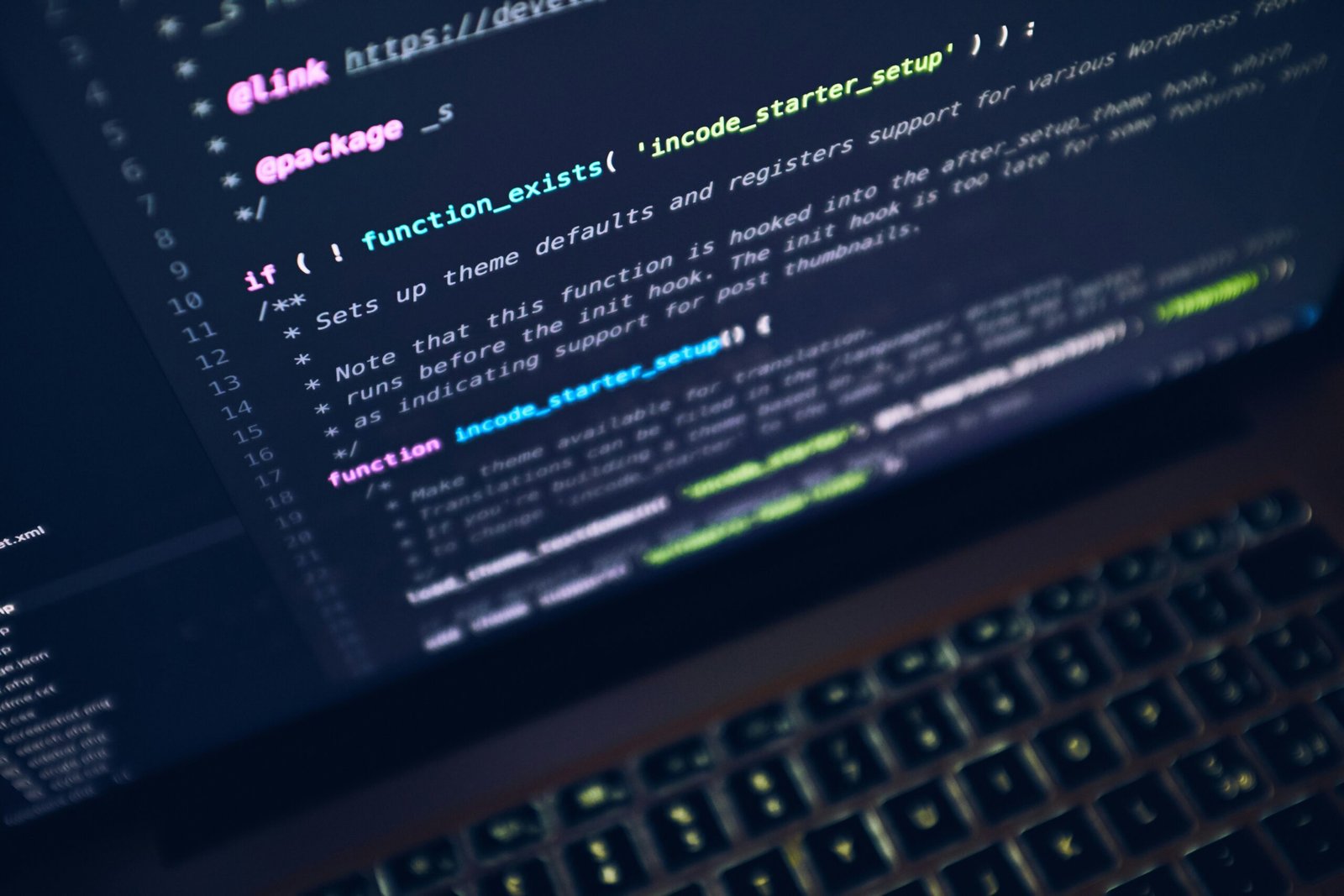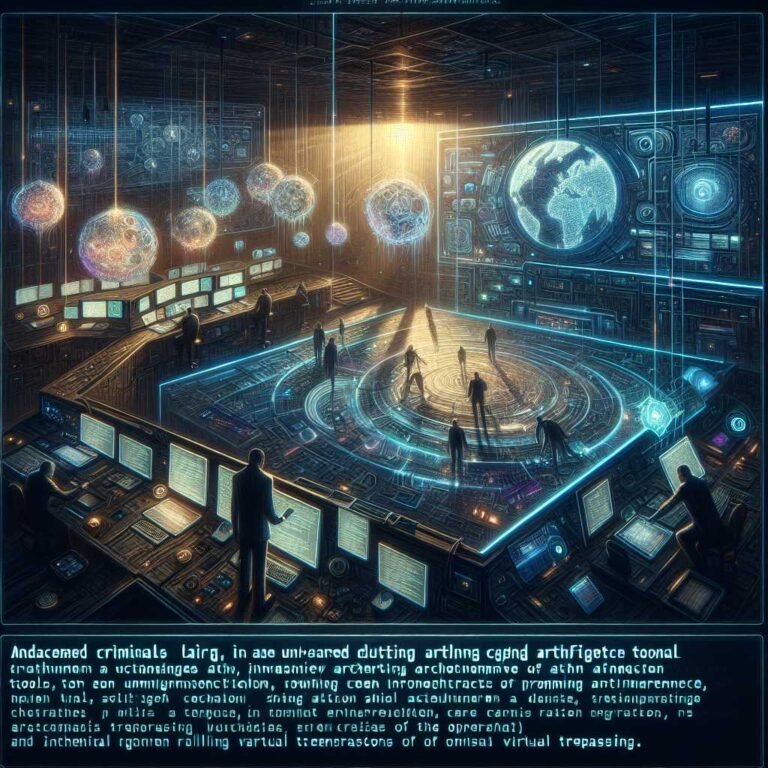Rise of Deepfake: A Threat to Privacy, Security, and Trust
Introduction to Deepfake Technology
Deepfake technology represents a significant advancement in artificial intelligence, specifically in the domain of synthetic media. At its core, deepfake technology involves the use of deep learning algorithms to create highly realistic digital forgeries. These forgeries can manipulate video, audio, and images to produce content that is virtually indistinguishable from authentic media. The term “deepfake” is derived from “deep learning,” a subset of AI that utilizes neural networks to analyze and generate data, and “fake,” referring to the fabricated nature of the content produced.
The origins of deepfake technology can be traced back to the early 2010s when researchers began experimenting with generative adversarial networks (GANs). GANs consist of two neural networks: the generator, which creates new data instances, and the discriminator, which evaluates them for authenticity. This adversarial process continues until the generator produces content that the discriminator can no longer distinguish from real data, resulting in highly realistic synthetic media.
Over the past decade, there have been significant advancements in AI and machine learning that have propelled the development and accessibility of deepfake technology. Initially confined to academic and research settings, these technologies have rapidly evolved and are now accessible to the general public through various software applications and online platforms. The increasing computational power, availability of large datasets, and improved algorithms have contributed to the enhancement of deepfake quality and realism.
One of the key principles behind deepfake algorithms is the concept of training models on vast amounts of data. By feeding the AI with extensive datasets of images, videos, and audio clips, the system learns to recognize patterns and features that can be manipulated to create convincing forgeries. These models can then be fine-tuned to generate specific outcomes, such as altering a person’s facial expressions, voice, or even entire body movements in a video.
In conclusion, deepfake technology has evolved from a niche research area to a widely accessible tool that can produce incredibly realistic synthetic media. While the advancements in AI and machine learning have enabled these developments, they also pose significant challenges to privacy, security, and trust in digital content.

The Role of DeepFaceLab and Similar Software
Software like DeepFaceLab has become instrumental in the burgeoning arena of deepfake technology. DeepFaceLab, an open-source deepfake creation tool, stands out for its sophisticated features and user-friendly interface. This software leverages advanced machine learning algorithms to swap faces in videos with remarkable accuracy. The process involves training a neural network to understand and replicate facial expressions, movements, and nuances from a given dataset. Users can then apply these trained models to new videos, creating highly convincing deepfakes.
DeepFaceLab’s popularity stems from its robust functionality and accessibility. Unlike earlier, more complex tools, DeepFaceLab simplifies the deepfake creation process, thus lowering the barrier to entry. The software provides a comprehensive suite of tools for preprocessing, model training, and post-processing, making it possible for even those with minimal technical expertise to produce high-quality deepfakes. Key features include automated face extraction, alignment, and seamless integration of the synthesized face into the target video. These functionalities ensure that users can achieve realistic results with relative ease.
Other software like Faceswap and Zao also contribute significantly to the deepfake landscape. Faceswap, another open-source project, offers similar capabilities to DeepFaceLab but is distinguished by its extensive community support and detailed documentation, which aid novice users in navigating the complexities of deepfake creation. Zao, on the other hand, is a mobile app that allows users to create deepfakes in a matter of seconds by simply uploading a photo and choosing a video clip. Its intuitive interface and quick processing time have made it immensely popular among casual users.
The widespread accessibility of these tools underscores a critical issue: the potential for misuse. As these software solutions become more user-friendly and available, the likelihood of their deployment for malicious purposes increases. Understanding the mechanics and features of tools like DeepFaceLab is essential for addressing the broader implications of deepfake technology on privacy, security, and trust. By recognizing how easily convincing deepfakes can be created, stakeholders can better appreciate the urgency of developing strategies to mitigate their potential harms.
Impact on Celebrities and High-Net-Worth Individuals
Deepfake technology has introduced a significant threat to celebrities and high-net-worth individuals, who are often the primary targets of this advanced form of digital manipulation. The allure of fame and wealth makes these individuals particularly susceptible to deepfakes, which can be used to create realistic yet entirely fabricated images and videos. Such manipulations not only jeopardize their public image but also pose substantial risks to their personal and professional lives.
One notable incident involved actress Scarlett Johansson, whose likeness was superimposed into explicit videos without her consent. This not only violated her privacy but also led to widespread dissemination across various platforms, causing significant distress and reputational harm. Similarly, Tom Cruise was the subject of a series of deepfake videos that showcased him performing exaggerated and outlandish behaviors. While these videos were eventually recognized as fake, they still managed to circulate widely, garnering millions of views and stirring public confusion.
The potential for reputational damage is immense. Celebrities and high-net-worth individuals often rely on their public image for career opportunities, endorsements, and maintaining their fan base. A single deepfake incident can undermine years of carefully built reputation, leading to loss of trust among fans and business partners. Moreover, the rapid and often uncontrollable spread of deepfakes on social media exacerbates the problem, making it difficult to contain the damage once it occurs.
Beyond reputational harm, the psychological impact on victims of deepfakes is profound. The invasion of privacy and the feeling of helplessness in the face of such technology can lead to anxiety, stress, and even depression. Knowing that their likeness can be manipulated and misused without their consent creates a pervasive sense of vulnerability and violation. For high-net-worth individuals, whose personal and professional lives are often closely intertwined, this can have far-reaching consequences.
In conclusion, the rise of deepfake technology poses a grave threat to celebrities and high-net-worth individuals. The potential for reputational damage, coupled with the psychological toll, underscores the urgent need for measures to combat this pervasive technology. Ensuring the privacy and security of these individuals is paramount in maintaining public trust and safeguarding their well-being.
Threats to the General Public
The advent of deepfake technology has introduced significant threats to the general public, particularly in the realms of privacy invasion, misinformation, and personal harm. Deepfakes, which are synthetic media where a person in an existing image or video is replaced with someone else’s likeness, have the potential to compromise individual privacy on an unprecedented scale. This technology can be exploited to create convincing yet entirely fabricated content that appears genuine to unsuspecting audiences.
Privacy invasion is one of the most alarming concerns. Deepfakes can be used to produce explicit or compromising images and videos without the consent of the individuals involved. Such content can be disseminated widely on social media platforms, leading to severe psychological distress, reputational damage, and even extortion. Cases have emerged where ordinary individuals, including non-celebrities and private citizens, have been targeted by these malicious acts, highlighting the pervasive risk this technology poses.
Moreover, the spread of misinformation is exacerbated by deepfake technology. In an era where information is rapidly consumed and shared, deepfakes can be weaponized to manipulate public opinion, sow discord, and undermine trust in legitimate sources of information. For instance, deepfake videos of public figures making inflammatory or false statements can go viral, influencing political landscapes and public discourse. The difficulty in distinguishing real from fake content can erode the public’s trust in media and institutions, fostering cynicism and confusion.
On a personal level, the potential for harm extends beyond reputational damage. Deepfakes can be used for identity theft, fraud, or to impersonate individuals for malicious purposes. This can lead to financial loss, legal troubles, and a sense of vulnerability among the victims. The broader societal implications are profound, as the pervasive fear of being targeted by deepfakes could stifle free expression and drive people to retreat from digital interactions.

Facilitation of Fraud and Other Crimes
Deepfake technology has emerged as a potent tool for criminal enterprises, enabling a wide array of fraudulent and illicit activities. Its ability to create highly realistic but fake audio and video content has made it a preferred method for committing financial fraud, identity theft, and even more serious offenses. By manipulating visual and auditory data, perpetrators can deceive individuals, organizations, and even governments with alarming precision.
One of the most concerning uses of deepfakes is in financial fraud. Imagine a scenario where a deepfake video of a CEO instructing the finance department to transfer large sums of money to a fraudulent account is circulated within an organization. Employees, convinced by the authenticity of the video, may comply without hesitation, resulting in significant financial losses. Such incidents have already been reported, with cybercriminals using deepfake audio to impersonate executives and authorize illicit transactions.
Identity theft is another area where deepfakes pose a substantial threat. By creating realistic videos or audio recordings, criminals can impersonate individuals to gain access to sensitive information or services. For instance, a deepfake video of a person could be used to bypass biometric security measures, such as facial recognition or voice recognition systems, compromising the security of personal and financial data.
Moreover, deepfakes can be weaponized for more nefarious crimes, such as blackmail or defamation. A fabricated video showing a public figure engaging in illicit activities can be disseminated to damage their reputation or coerce them into complying with demands. The psychological and social impact of such malicious use cannot be overstated, as it undermines trust in digital media and public figures.
Law enforcement agencies face significant challenges in combating deepfake-enabled crimes. The sophistication of deepfake technology makes it difficult to distinguish between genuine and manipulated content. Additionally, the rapid dissemination of deepfakes across social media and other digital platforms complicates efforts to mitigate their impact. Developing advanced detection tools and establishing robust legal frameworks are essential steps to address this growing threat effectively.
Blurring the Lines Between Truth and Deception
Deepfake technology, which leverages advanced artificial intelligence to create hyper-realistic digital forgeries, blurs the lines between truth and deception in unprecedented ways. The philosophical and ethical implications of this technology are profound, challenging our fundamental perceptions of reality and authenticity. As deepfakes become increasingly sophisticated, the ability to differentiate between genuine and manipulated content diminishes, eroding the trust that society places in visual and audio media.
The proliferation of deepfakes undermines the credibility of media sources, leading to a pervasive skepticism towards authentic content. This erosion of trust has significant ramifications for journalism, which relies on the integrity of visual and audio evidence to report the truth. When the public can no longer discern real footage from fabricated content, the role of journalism as a pillar of democracy is compromised. Skepticism towards media can result in the spread of misinformation and the polarization of public opinion, destabilizing societal cohesion.
In the legal arena, deepfakes pose a substantial threat to the integrity of evidence. Courts depend on reliable audio and visual recordings to adjudicate cases accurately. The introduction of deepfakes into legal proceedings could lead to wrongful convictions or acquittals, undermining the justice system’s foundation. The potential for deepfakes to be used maliciously in legal contexts necessitates the development of robust detection and verification technologies to safeguard judicial processes.
On a day-to-day level, deepfakes affect interpersonal communications by fostering distrust in personal interactions. The ability to create convincing but false representations of individuals can be exploited for malicious purposes, such as identity theft, blackmail, or defamation. This potential for abuse not only violates individual privacy but also strains social relationships, as people become wary of the authenticity of digital communications.
The long-term consequences of deepfake technology are far-reaching, necessitating a concerted effort to address its ethical and philosophical challenges. As society grapples with these issues, it is imperative to develop and implement strategies to mitigate the impact of deepfakes, ensuring that truth and trust remain cornerstones of our digital age.
Efforts to Combat Deepfake Threats
The rapid proliferation of deepfake technology has garnered significant attention from various sectors, prompting a multifaceted response to mitigate its potential threats. One of the primary measures in this battle is the advancement of detection software. Researchers and tech companies are leveraging artificial intelligence and machine learning to develop sophisticated tools capable of identifying deepfakes with high accuracy. These detection algorithms analyze inconsistencies in audio-visual data, such as unnatural facial movements and audio mismatches, to flag potentially manipulated content. Notable examples include Microsoft’s Video Authenticator and the Deepfake Detection Challenge spearheaded by Facebook and other tech giants.
Legal frameworks are also evolving to address the complexities introduced by deepfakes. Governments worldwide are enacting legislation aimed at curbing malicious uses of this technology. For instance, in the United States, several states have introduced laws that specifically criminalize the creation and distribution of malicious deepfakes, particularly those aimed at defaming individuals or influencing elections. The European Union is also actively working on regulations under its Digital Services Act to ensure that digital platforms take responsibility for identifying and removing harmful deepfake content.
Educational initiatives are another crucial component in the fight against deepfake threats. Public awareness campaigns are being launched to educate individuals about the existence and dangers of deepfakes. Non-profit organizations, academic institutions, and tech companies often collaborate to provide resources and training that help people recognize and critically evaluate digital content. These initiatives are essential for fostering a more informed and vigilant public that can effectively discern authentic media from manipulated material.
The concerted efforts of governments, tech companies, and non-profits are pivotal in addressing the challenges posed by deepfake technology. By combining advanced detection tools, robust legal frameworks, and comprehensive educational programs, society can better navigate the risks associated with deepfakes, thereby safeguarding privacy, security, and trust in the digital age.
Future Outlook and Conclusion
As deepfake technology continues to evolve, it presents both unprecedented challenges and opportunities. On one hand, advancements in artificial intelligence and machine learning are expected to make deepfakes more sophisticated and harder to detect. Future developments may include more realistic facial expressions, improved voice replication, and even the ability to generate deepfakes in real-time. These advancements could have significant implications for various sectors, including entertainment, education, and communication, potentially enhancing user experiences through more immersive and interactive content.
However, the increasing sophistication of deepfake technology also brings about new challenges. The potential for misuse in political campaigns, social engineering attacks, and misinformation campaigns cannot be overstated. As deepfakes become more convincing, distinguishing between authentic and manipulated content will become increasingly difficult. This could erode public trust in digital media and exacerbate issues related to privacy and security.
To address these concerns, it is crucial for stakeholders—including governments, tech companies, and researchers—to collaborate on developing robust detection and authentication methods. Investing in technologies that can identify deepfakes and verify the authenticity of digital content will be essential. Additionally, public awareness and education initiatives can help individuals recognize the potential risks and exercise caution when consuming digital media.
In conclusion, while the future of deepfake technology holds promise for innovation, it also necessitates a proactive approach to mitigate its risks. Balancing the benefits and dangers associated with deepfakes will require continuous vigilance and adaptation. By staying informed and adopting comprehensive strategies, society can better navigate the complexities introduced by this rapidly advancing technology.
For more articles related to technology, please browse around InnoVirtuoso and find more interesting reads.







